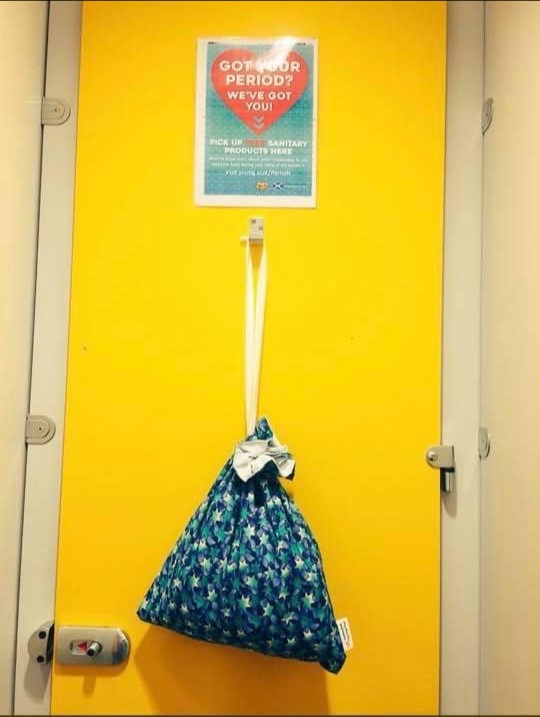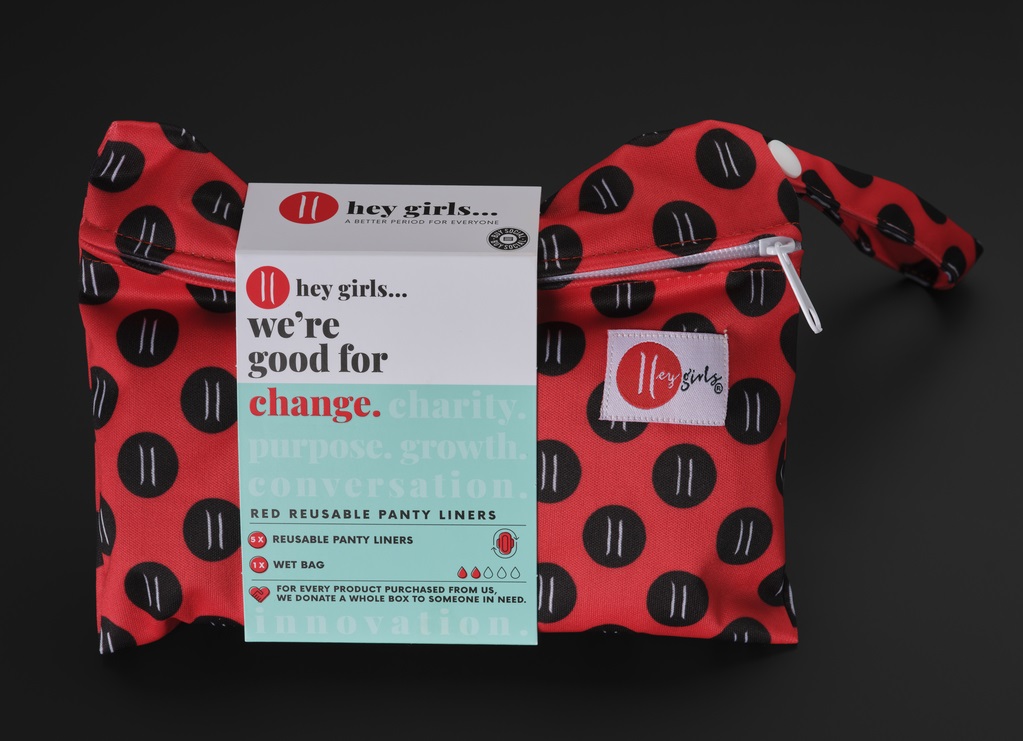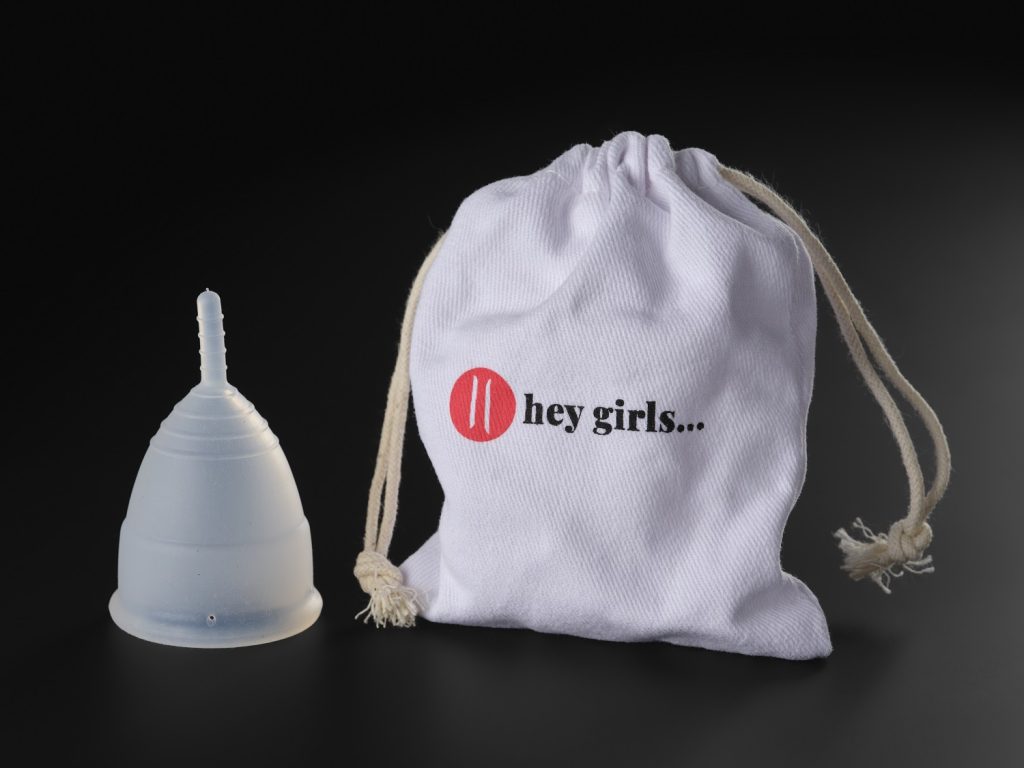Tampons, pads, and menstrual cups are everyday objects used by many though rarely considered noteworthy. But what can a group of period products say about the social and environmental concerns of Scotland today? Georgia Vullinghs, Assistant Curator of Modern and Contemporary History, discusses some recent acquisitions relating to the campaign against Period Poverty and access to menstrual products in Scotland.
In January 2021, the Scottish Parliament passed the Period Products (Free Provision) (Scotland) Act. After several years of campaigning by grassroots organisations, and parliamentary debates about the Bill proposed by Monica Lennon MSP, this was an important step in improving access to period products. By law, they must now be ‘generally obtainable free of charge’ in all local authorities in Scotland.

The implementation of the Period Products (Free Provision) (Scotland) Act is now part of Scotland’s social welfare and public provision duties. Period Poverty was identified by campaigners as a big problem in Scotland. Some surveys found that as many as a quarter of people who menstruate have at some point missed school or work because they couldn’t access period products. Barriers are usually financial, but they can also be physical: sometimes we get caught out and don’t have the right material to hand. Embarrassment and stigma around menstruation can also prevent people from asking for what they need.
Paige Holland, a student at Kilmarnock Academy and Young Scot Award winner, was shocked to hear that some of her peers were missing school because they couldn’t access products. As part of a campaign to tackle the problem in her school, she used her craft skills to make cotton drawstring bags which now hang in the toilets, stocked with the things that might be needed by people when on their period. Paige and her teacher said it has made a big difference at the school.

This kind of action at a local level, and the passing of the Act on a national one, signifies a wider change in society. By publicly talking about periods and acknowledging the essential nature of the products used to manage menstrual fluid, it seems like some of the stigma around the topic is being broken down. Rather than being hidden away, many public toilets in Scotland now proudly offer products for people to help themselves to. While many of these initiatives pre-date the Act, like at Kilmarnock Academy, their formalisation in law has placed a public seal of approval on the idea.
To represent this change in contemporary Scotland, we recently acquired a selection of period products made by Scottish company, Hey Girls. Looking at our national collections it was evident that the daily lived experience of menstruation, and its material culture, the tools many people use to deal with the (usually) monthly flow of blood, wasn’t particularly visible. Possibly because of social taboos around openly discussing ‘periods’, as well as their very everyday nature, historically the topic has not been considered important for collection and display by curators. The passing of the Period Products Act presented an opportunity to revisit the topic, while linking these everyday objects with other aspects of life in Scotland today.

Hey Girls was set up in 2018 as a social enterprise by Celia Hodson and her daughters Kate and Bec. These women experienced Period Poverty themselves and wanted to create an environmentally and ethically sustainable range of products in a way that would address the problem. While Hey Girls work across the UK, the business started in Scotland. They have contributed to the campaign against Period Poverty and developed an app with the Scottish government which allows users to locate free products near them.
Through their ‘buy one, donate one’ scheme, the company works with communities to provide free access. Just one brand amongst many, due to their involvement in the campaign, their ongoing contribution to making period products accessible, and their Scottish origins, acquiring Hey Girls products for the museum provides more than simply an example of the products used by people who menstruate in Scotland today.

The objects themselves are material evidence of contemporary attitudes towards menstruation, and more, that will be preserved in the national collections for centuries to come. Through these objects, future visitors will learn about an important aspect of daily life as well as some of the wider concerns facing twenty-first century Scotland.
The product packaging emphasises the social and environmental values that Hey Girls want to pursue: “we’re good for society”, “we’re good for you”, “we’re good for change”, and “we’re good for nature” are just some of the slogans carried across the boxes and wrappings.

Branding the company and products as socially and environmentally conscious is not unique to Hey Girls. Many other products in Scotland are being marketed in this way. They are a sign of a growing number of consumers who want to know more about the things they are using, where they come from, and the impact they have on the environment. We might infer that users of Hey Girls products aim for a lifestyle that adheres to the values the packaging promotes: that they want to be “good for” society, change, and nature too.

Another notable feature of the packaging is that it doesn’t include any depictions of human figures. While most people probably interpret periods as a woman’s experience, and period products as women’s things, Hey Girls (and other period product manufacturers) want to acknowledge that not all people who menstruate identify as women. Indeed, not all women menstruate! This recent design change for Hey Girls reflects shifting societal attitudes in Scotland (and beyond) around gender identity, an issue which has become more publicly visible and spoken about.
Preserved in the collections, these new objects document the tools available to users in twenty-first-century Scotland to manage their menstrual flow. The few previous examples from our collections include a packet of pads from the 1930s (large chunky wads of cotton which would have been worn with a belt) and tampons from the early 2000s. There are also some leaflets from the 1930s and 1980s which give advice on how these products should be used. The addition of contemporary products documents a wider example of the materials available in modern Scotland.
It is important to think about period products as technologies. They have been designed to help people deal with the ‘waste’ produced by the body in the menstrual cycle. Adverts that show sporting women getting on with their game while on their period emphasise the idea that products help people keep living their life as if they weren’t. This same attitude applies to the ability to carry on with work and education. At the same time, however, this approach can suggest that menstruation should be concealed, with negative connotations, rather than openly acknowledged as a common and natural experience.

The development of new materials for use in period products has enabled people to live a more environmentally sustainable life, while still benefitting from the convenience of commercially available products. These disposable tampons and pads are made of plant materials and are biodegradable. While that itself is not completely new, the sugar cane tampon applicators take tools which are commonly made of plastic and remake them in a viable degradable alternative.

Similarly, the plastic-like wrapping used to keep each individual tampon and pad clean (essential for their hygienic use) is made of PLA/PBAT (polylactic acid and polybutylene adipate co-terephthalate) blend. This material is a biodegradable plastic, which, although still partly made from petrochemicals, reduces landfill waste and the problem of long-lasting, floating plastics in our environment.
The newly acquired reusable panty liners are made of bamboo and cotton textile. They’re designed to be used, washed, and re-used for around 15 years. Similarly, menstrual pants are designed to withstand leakage. Reusable cloth is not new to the history of menstruation. People have historically used rags, more intentionally crafted handmade knitted and sewn pads, and aprons to catch menstrual fluid and prevent staining of clothing. These twenty-first-century products provide that function for consumers who don’t want to make their own, using textiles that are engineered to be soft, absorbent, easily washable, and durable without being too bulky.

Another example is the reusable silicone menstrual cup. Rubber menstrual cup technology has been available since the 1930s but was not at the time widely adopted. It is only recently that use of medical-grade silicone menstrual cups has become more mainstream.

These period products represent a very everyday experience for a significant portion of people in Scotland. Seeing more of these objects in our collections is an important step in better documenting and representing an aspect of life common to many people, but infrequently discussed in public.
Beyond that, their design, construction, and advertising represent much wider issues that are at the forefront of public and political discourse in Scotland today. They show that environmental impact has become a concern, and products are being designed to help people who menstruate live a more environmentally sustainable, but still convenient, lifestyle. As part of the Period Poverty story, these objects also speak about societal changes which are being supported in Scottish law.
We continue to collect objects which document our changing world, through different aspects of daily life, technology, design, and nature. Expanding collections that relate to previously overlooked experiences contributes to telling a rich story of Scotland today, for now and in the future. As a group, these period products paint a picture of a socially and environmentally conscious nation, one which many would like twenty-first-century Scotland to be recognised as. Whether this will be the lived experience of future generations is another question.
We are currently working towards making free period products available in our museums. Subscribe to our newsletter or follow us on our social media channels for the latest updates from National Museums Scotland.
